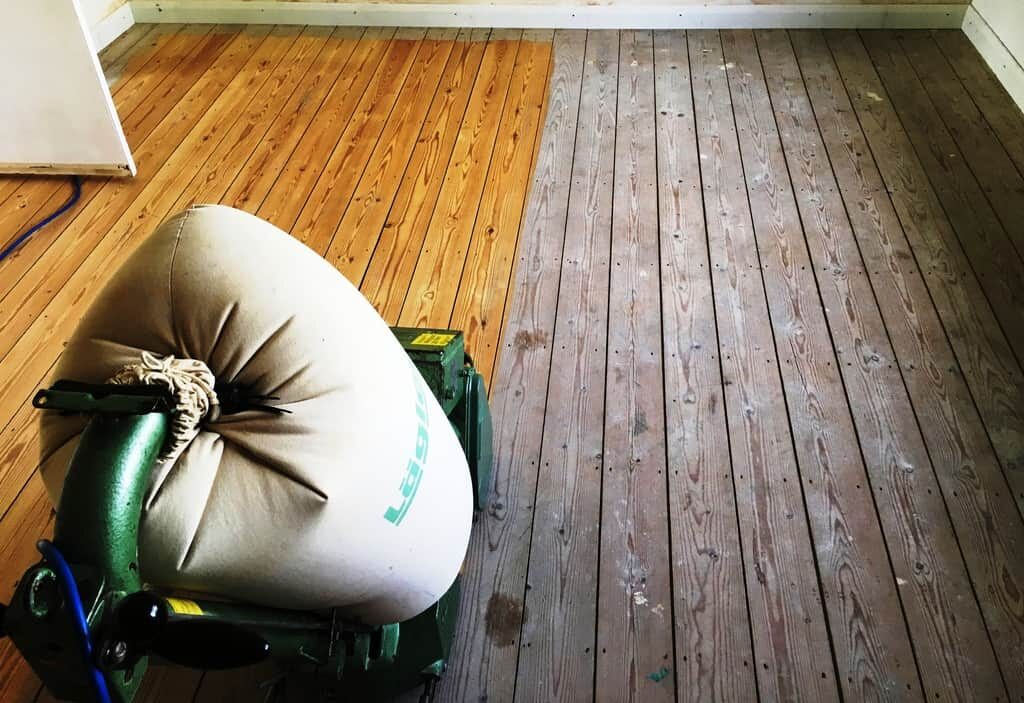London:
Nationwide:
Professional Buffing Tools for Floor Sanding
Posted on October 4, 2023
Buffing
Mastering Floor Restoration: A Guide to Professional Buffing Tools for Sanding
In the world of floor restoration and maintenance, achieving the perfect finish is the culmination of a carefully orchestrated dance of skill and machinery. At the heart of this process are professional buffing tools for floor sanding. These specialised tools not only help in reviving the original lustre of wooden floors but also play an instrumental role in ensuring longevity and evenness. Just as an artist requires the finest brushes to paint a masterpiece, a floor technician relies on superior buffing tools to breathe new life into floors that have endured years of wear and tear. The brilliance of a newly sanded floor is not just the result of expert craftsmanship but also the culmination of state-of-the-art equipment and technology. Professional buffing tools for floor sanding are the unsung heroes of the industry, transforming aged and scratched surfaces into smooth, gleaming expanses. These tools, optimised for efficiency and precision, ensure that floor sanding professionals can deliver consistent and high-quality results time and time again. Understanding these tools’ capabilities and nuances is crucial for anyone wishing to excel in the art of floor restoration. Anyone familiar with the intricate process of floor renovation understands the importance of the tools employed. Among the most significant are the professional buffing tools for floor sanding. These devices, equipped with advanced features and designed for optimal performance, can metamorphose a dull, lifeless floor into a shimmering centerpiece. The magic of these tools lies not just in their machinery but in the flawless finish they can help achieve, a testament to the symbiotic relationship between craftsmen and equipment in the floor restoration process.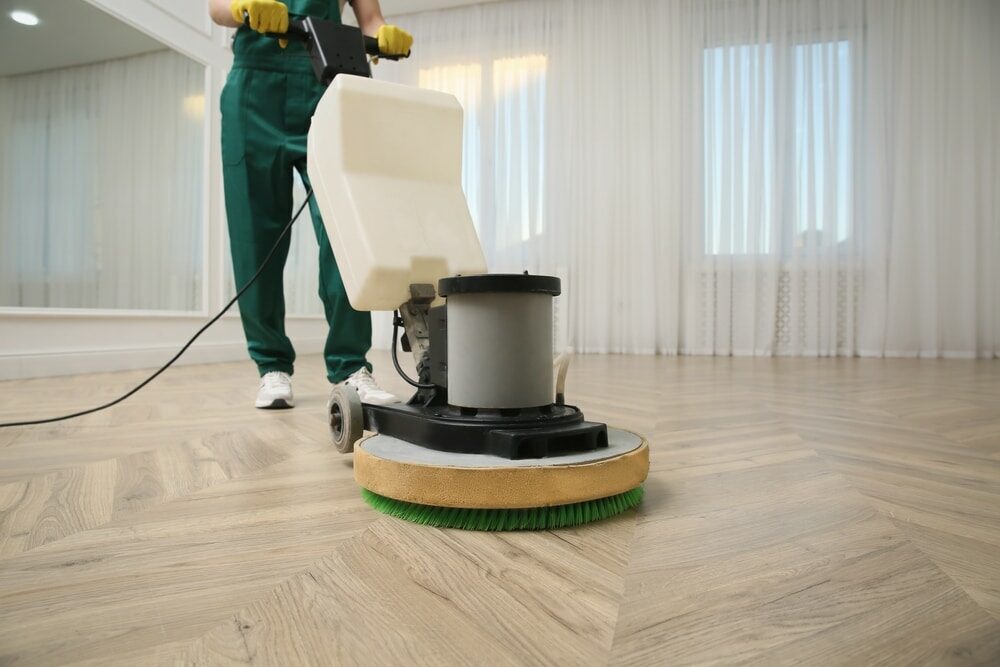
Introduction to Wood Floor Sanding and Buffing
Wooden floors, with their timeless charm and warm aesthetics, have been a favoured choice for homeowners for centuries. Yet, like all things beautiful, they too can succumb to the relentless march of time, showing signs of wear, tear, and age. Enter the twin artistry of sanding and buffing—a process that not only rejuvenates these wooden expanses but also accentuates their inherent beauty. Wood floor sanding involves removing the topmost surface of a wooden floor using abrasive materials, essentially stripping away any old finish, stains, or imperfections. The goal is to achieve a smooth, even surface that is primed and ready for the finishing touch. Buffing, on the other hand, serves as a subsequent step, using finer abrasive pads or brushes to further smooth the surface, preparing it for sealing or refinishing, or sometimes giving the wood a soft sheen all on its own. Together, sanding and buffing lay the foundation for restoring a wooden floor’s glory, breathing new life into spaces, and adding value to homes. For those eager to dive into the world of floor restoration or simply curious about the process, understanding the nuances, techniques, and tools of these processes is crucial. Let’s embark on this journey of transformation, one grain and gloss at a time.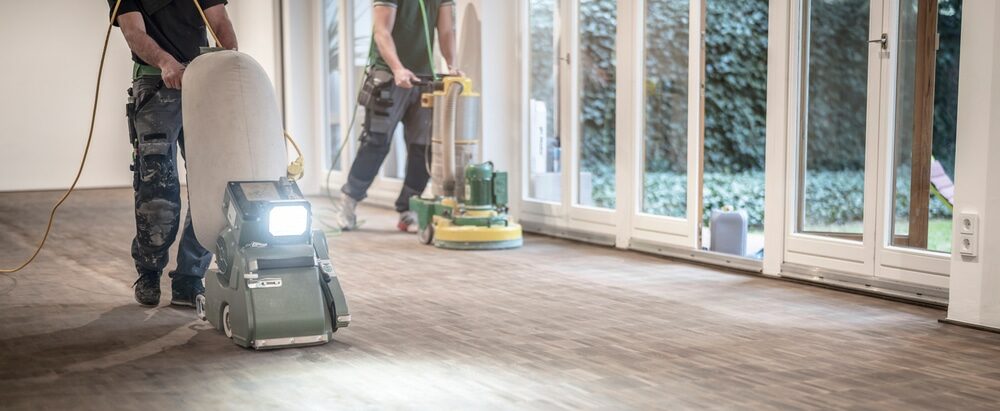
Types of Professional Wood Floor Buffing Machines
When it comes to ensuring a flawless finish on wooden floors, professional buffing machines play an indispensable role. These specialised tools are designed to handle various tasks, from smoothing out surfaces after sanding to imparting a gleaming finish that showcases the wood’s natural beauty. Understanding the different types of wood floor buffing machines can help professionals and DIY enthusiasts alike choose the right tool for their specific needs. Here’s a breakdown of the most commonly used professional wood floor buffing machines:- Rotary Buffers: The most traditional type, rotary buffers feature a circular pad that spins in a single direction. They are versatile tools that can be used with different pads for cleaning, polishing, or buffing. With a steady hand, they can produce a beautifully polished surface on wood floors.
- Random Orbital Buffers: Unlike rotary buffers, random orbital buffers move in a random or oscillating pattern. This means they’re less aggressive and offer a reduced risk of leaving swirl marks on the floor. They’re ideal for light buffing tasks or for floors that are more sensitive to aggressive buffing.
- Planetary Sanders/Buffers: This type of buffer features multiple smaller discs within a large disc, moving in different directions simultaneously. The design ensures a more uniform buffing pattern and is especially useful for more substantial or industrial projects, ensuring even and consistent results.
- Square Buff Sanders: Also known as rectangular buffers, these machines have a square or rectangular base. Their straight edges allow them to get closer to walls and corners than round buffers. They can be used for both sanding and buffing, making them a versatile choice for floor restoration projects.
- Burnishers: Operating at much higher speeds than typical buffers, burnishers are primarily used for polishing, imparting a high-gloss shine to floors. They’re typically used on finished surfaces to bring out a mirror-like shine, especially on floors with a protective coating or wax.
- Weighted Buffers: These are similar to traditional rotary buffers but come with added weight. The extra weight provides more pressure on the floor, making it particularly effective for tasks that require more aggressive buffing.
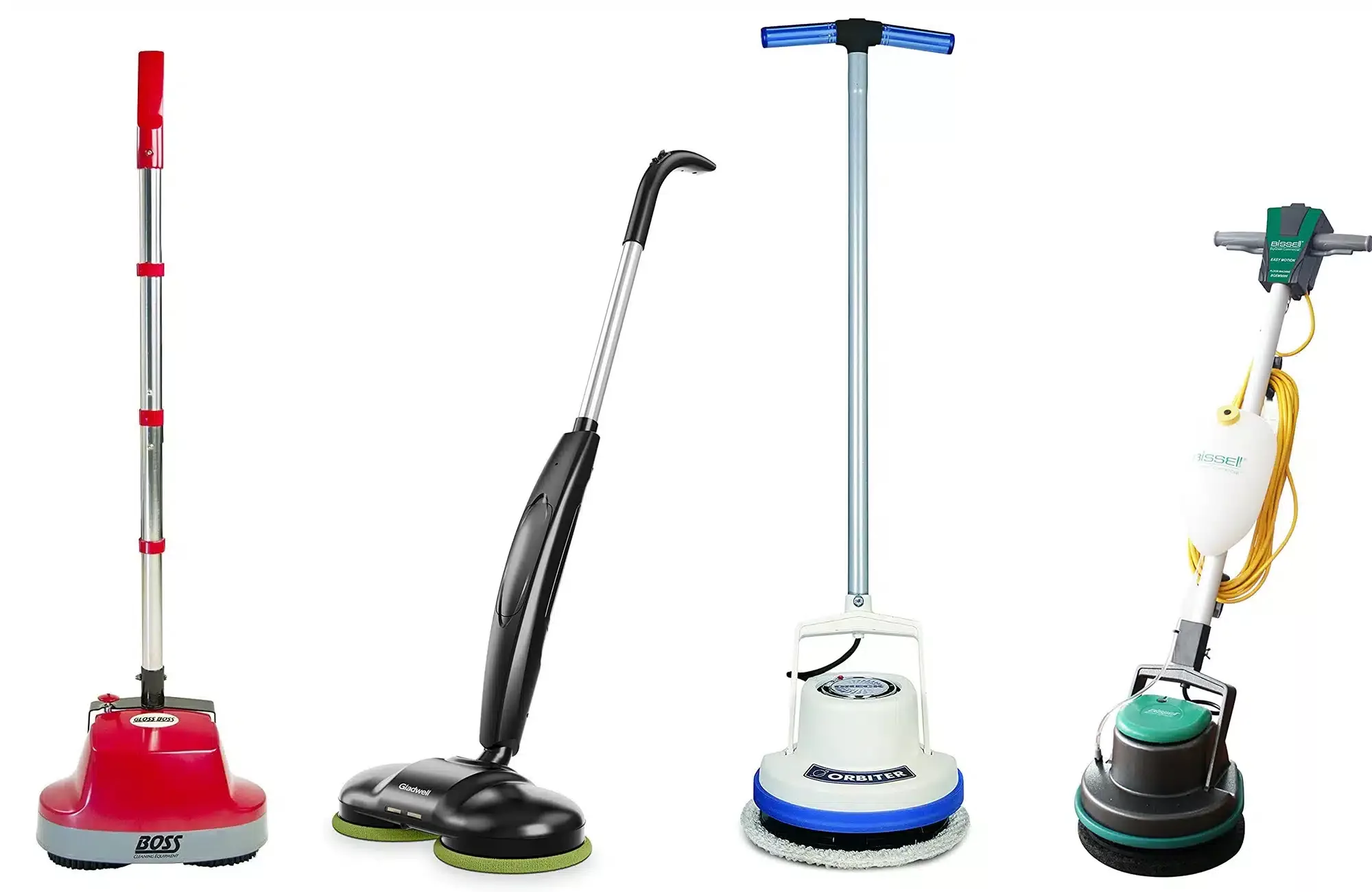
Key Features to Consider When Choosing Buffing Tools
Buffing tools, pivotal in the floor restoration process, can vary widely in terms of design, functionality, and efficiency. Making an informed decision when selecting one is essential to achieving optimal results and ensuring value for money. Here are the key features to consider when choosing buffing tools for floor sanding and polishing:- Power and Motor Capacity: A tool’s power often dictates its efficacy. Look for a motor that provides adequate RPM (rotations per minute) to suit the task at hand. Higher RPMs are typically ideal for polishing, while lower RPMs are often preferred for deep cleaning or stripping.
- Machine Size and Pad Diameter: Depending on the size of the area you’re working on, the size of the machine can make a significant difference. Larger machines cover more ground faster, but they may not be suitable for smaller rooms or intricate spaces.
- Ergonomics and Handling: A well-designed handle with adjustable height settings can make the task less strenuous, especially during prolonged usage. Consider a tool that’s comfortable to grip and manoeuvre.
- Weight: While weight can provide more pressure for effective buffing, it’s also important to ensure the machine isn’t too heavy to handle, especially if working on vertical surfaces or transporting frequently.
- Versatility: Some buffing tools are designed to perform multiple tasks, from sanding to polishing. Machines that accept various pads or brushes offer more flexibility in terms of applications.
- Dust Collection: A built-in dust collection system is invaluable, especially when sanding. It not only maintains a cleaner work environment but also prolongs the machine’s lifespan and ensures better air quality.
- Vibration Control: A machine with reduced vibration is not only more comfortable to use but also provides more precision during the buffing process.
- Variable Speed Control: The ability to adjust the speed allows for better control over different tasks. For instance, you might need slower speeds for delicate buffing and higher speeds for aggressive polishing.
- Durability: Look for machines built with high-quality materials that can withstand frequent use. It’s an investment, and ensuring the tool’s longevity is crucial.
- Ease of Maintenance: A machine with easily accessible and replaceable parts can save time and money in the long run. Also, consider the availability of spare parts on the market.
- Noise Level: Especially if working in residential areas or during odd hours, a quieter machine can be a valuable feature to consider.
- Price and Warranty: Finally, while it’s tempting to opt for the most affordable option, it’s essential to balance cost with quality. A tool with a good warranty can also provide peace of mind regarding its durability and performance.

The Top Professional Woof Floor Buffing Tools in the Market
As of my last update in January 2022, there were several reputable buffing tools on the market favoured by professionals for wood floor restoration. It’s important to note that the market is dynamic, and newer models might have emerged since then. Nonetheless, here’s a list of some of the top professional wood floor buffing tools that were recognised for their performance, durability, and user-friendliness:- Clarke American Sanders, OBS-18: This is a favourite among many professionals for its power and effectiveness. It’s suitable for both sanding and polishing tasks and boasts a durable design.
- Bona FlexiSand DCS Buffer: Known for its versatility, this machine is equipped with a powerful motor and can be used for a range of tasks, from sanding to finishing. Its Dust Containment System (DCS) ensures a cleaner workspace.
- Lagler Trio: This three-disc sanding machine offers fine sanding and polishing capabilities. It’s known for its ability to reach areas that traditional belt sanders cannot, making it ideal for detailed work.
- Clarke American Sanders Epoch: This dual-speed buffer offers flexibility for both sanding and buffing. Its unique design allows for aggressive sanding at the lower speed and superior polishing at the higher speed.
- Kunzle & Tasin (K&T) Scorpion: With its robust motor and ergonomic design, the Scorpion stands out as a reliable and user-friendly tool for floor restoration experts.
- Pallmann Spider: This machine offers a unique planetary gearing system, ensuring even and consistent results across the floor. It’s especially favoured for its ability to provide a smooth finish on challenging wood grains.
- Square Scrub EBG Series: Recognised for its versatility, the Square Scrub series can be used for deep cleaning, prep work, and polishing. Its rectangular design allows it to get closer to edges and corners.
- Makita 9227C 7-Inch Hook and Loop Electronic Polisher/Sander: While smaller than the other tools listed, this Makita model is renowned for its power, variable speed control, and consistent performance.
- 3M Buffer/Polisher: Known for its ergonomic design and reliable performance, 3M’s offering is a favourite for those looking for a balance of power and manoeuvrability.
- Numatic Woodworker T2: This is recognised for its efficiency in both sanding and polishing. Its integrated dust extraction system ensures a clean working environment.
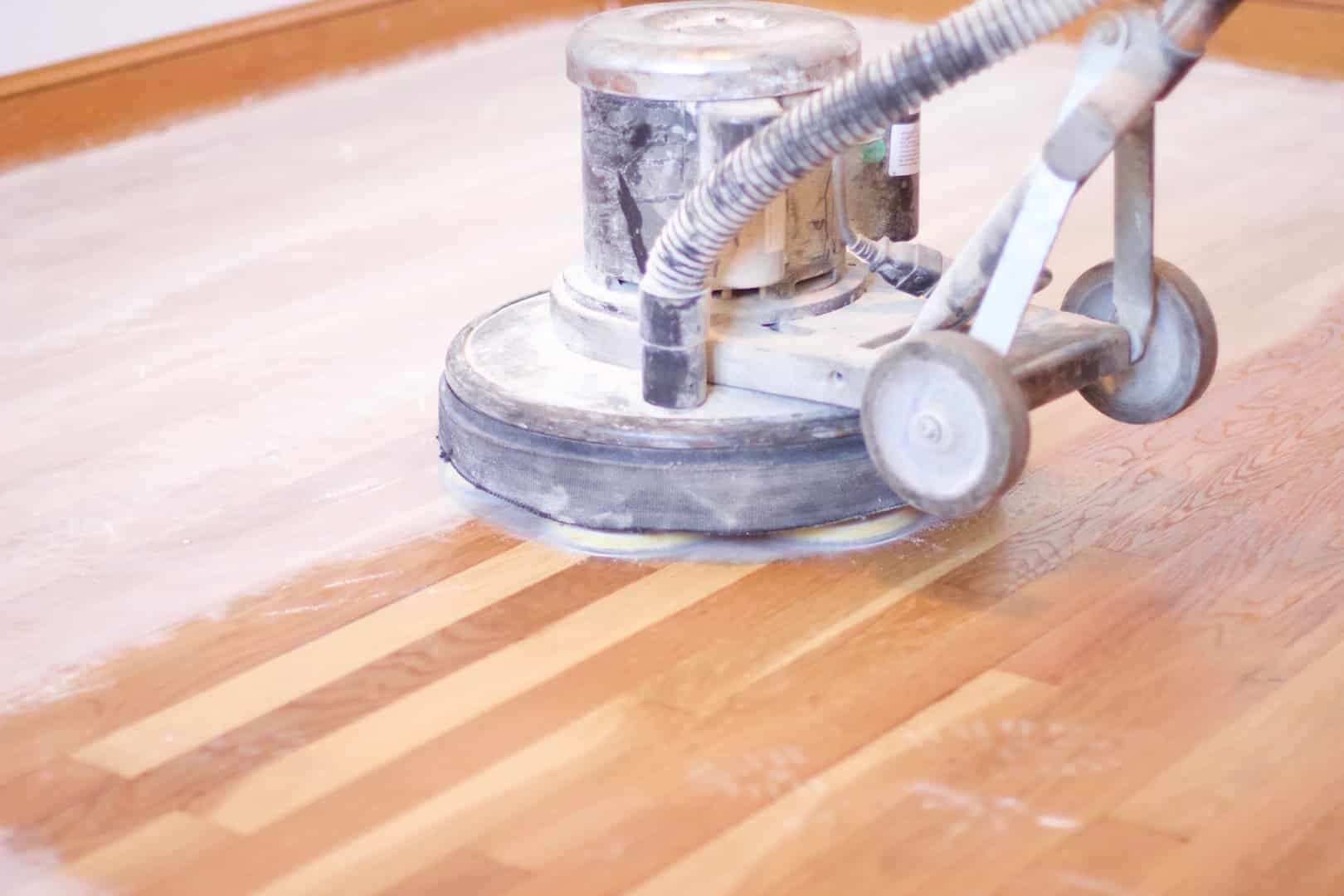
Care and maintenance of buffing tools
Caring for and maintaining your buffing tools is essential to ensuring their longevity, optimal performance, and safety during operations. Proper maintenance can also save you money in the long run by preventing premature wear and avoiding unnecessary repairs. Here’s a guide to the care and maintenance of buffing tools:- Regular Cleaning:
- After each use, ensure you clean the machine to remove dust, debris, and residues.
- Clean the pads or brushes thoroughly. If they are washable, follow the manufacturer’s cleaning instructions.
- Wipe down the exterior of the machine with a damp cloth to remove any accumulated dust or particles.
- Check for wear and tear:
- Regularly inspect pads or brushes for signs of wear. Replace them when they become too worn or if they’re no longer effective.
- Examine power cords for any damage or exposed wires, which can be a safety hazard.
- Lubrication:
- Some machines might require periodic lubrication of moving parts to ensure smooth operation. Always use the recommended type of lubricant and follow the manufacturer’s guidelines.
- Dust Collection Maintenance:
- If your buffing tool has an integrated dust collection system, ensure you empty the dust bag or container regularly.
- Clean or replace filters as needed to maintain optimal airflow and dust extraction.
- Storage:
- Store the buffing tool in a dry, cool place away from direct sunlight.
- Ensure the storage area is free from excessive dust or debris that might clog the machine.
- If possible, hang or store the machine off the ground to prevent moisture-related damage.
- Regular Inspection:
- Periodically inspect the machine for any loose parts, unusual noises, or vibrations.
- Tighten any loose screws, bolts, or fittings.
- Avoid Overloading:
- Always operate the machine within its recommended capacity. Overloading can cause motor strain, reducing the machine’s lifespan.
- Use the right accessories:
- Only use pads, brushes, and accessories that are designed for your specific buffing tool. Incorrect accessories can damage the machine or reduce its effectiveness.
- Safety First:
- Always disconnect the machine from the power source when performing maintenance or changing accessories.
- If you notice any electrical issues, such as sparking or unexpected power fluctuations, consult a professional before continuing to use the machine.
- Professional Servicing:
- Consider having your buffing tool serviced by a professional periodically, especially if it’s a high-end or commercial-grade machine. They can perform a thorough check, recalibrate components, and address any wear that might not be immediately visible.
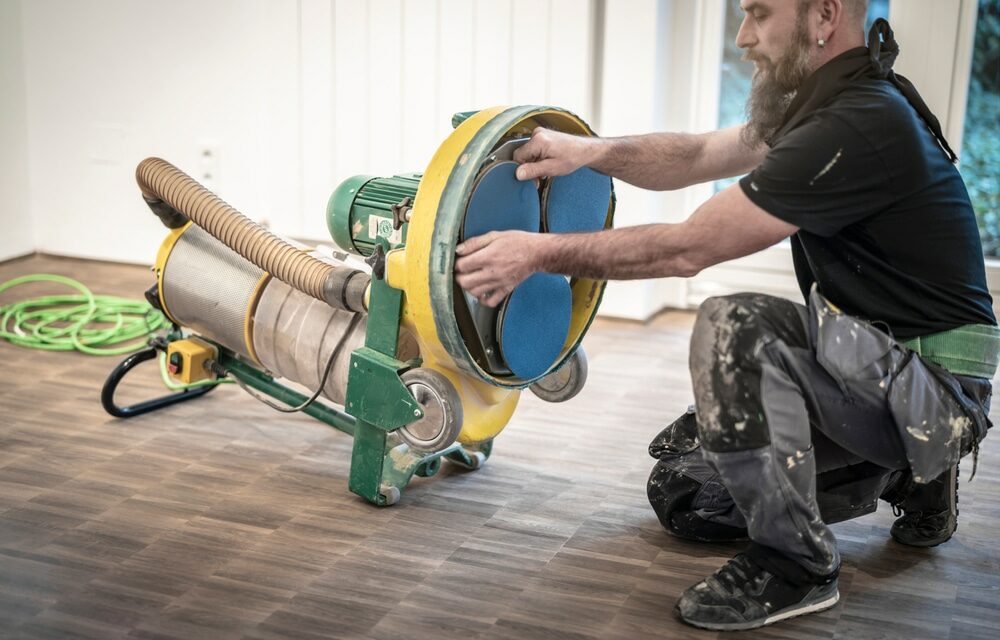
Conclusion
Professional buffing tools are indispensable assets in the realm of wood floor restoration and maintenance. These versatile machines and accessories are the keys to achieving flawless, gleaming surfaces that enhance the beauty and longevity of wooden floors. From rotary buffers to planetary sanders and beyond, the market offers a wide array of options to cater to various needs and preferences. To make an informed choice, it’s essential to consider factors such as power, size, versatility, and ease of maintenance. Selecting the right tool for the task at hand can significantly impact the efficiency and quality of your floor restoration projects. Furthermore, proper care and maintenance of buffing tools are paramount. Regular cleaning, inspection, and adherence to safety precautions not only extend the lifespan of your equipment but also ensure the safety of operators and the quality of the work performed. As technology and innovation continue to shape the field, staying up-to-date with the latest advancements and best practices in buffing tools and techniques is crucial for professionals and enthusiasts alike. With the right tools and knowledge, the artistry of wood floor restoration can be a fulfilling endeavour, resulting in stunning, long-lasting results that enhance the beauty and value of any space.Some Useful Links:
- Stairs Sanding & Refinishing
- Floor Sanding Services
- School Floor Sanding
- Wood Floor Restorations
- Wood Floor Repairs
- Wood Floor Polishing
More from our Blog:
How to Repair Damaged Floors with Belt Sanding Step-by-Step Guide to Belt Sanding Your Floors Innovative Techniques for Using Belt Sanders in Floor Refinishing How to Achieve a Perfectly Flat Surface with Belt Sanding for Floor Refinishing Common Belt Sanding Tools and Accessories for Floor Refinishing The Role of Belt Sanding in Achieving a Professional Finish on Your Floors Belt Sanding vs. Drum Sanding for Floor Refinishing
Get more floor restoration advice…
Sanding
We provide virtually dust-free sanding with our continuous belt machinery with mobile extraction units, giving you a safer environment for your family.
Oiling
This organic finish not only adds beauty to your home but also has exceptional water-repellent characteristics, making it easier to clean and maintain.
Waxing
This natural floor finish offers the softest and most mellow appearance – and leaves your floor able to breath.
Buffing
Using soft buffing machines (and hand-polishing where required) will bring a wonderful sheen to your newly-finished floor.
Repairs
We offer a full assessment of your wooden floors to determine what repairs are needed to provide the perfect working surface for the later stages of sanding, staining and sealing.
Restoration
We offer a comprehensive restoration process designed to address floors that are improperly fitted or damaged over time through wear and tear.
Request a fixed price quote for your wood floor restoration now
Simply enter your postcode below to get started.
Services
Wood Floor Sanding Wood Floor Restoration Wood Floor Scratch Repair Squeaky Wood Floor Repair Parquet Floor Sanding Parquet Floor Restoration Commercial Floor Sanding Church Floor Sanding Community Centre Floor Sanding School Floor Sanding Gap Filling Gap Filling with ResinCopyright © Mr Sander®
Privacy & Cookies Terms & Conditions Complaints Procedure Cancellation Rights Sitemap

